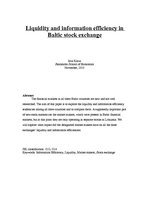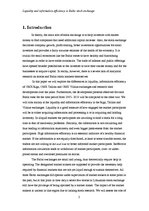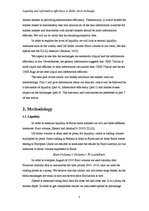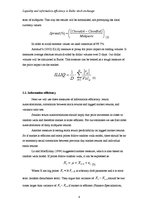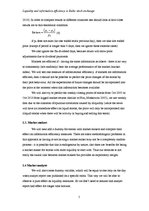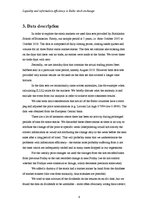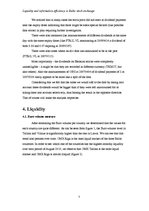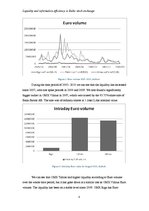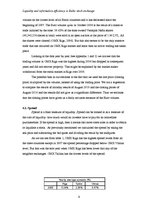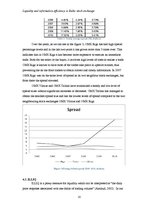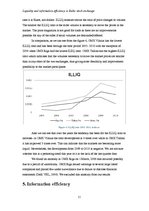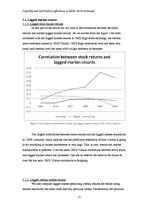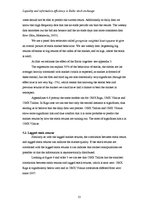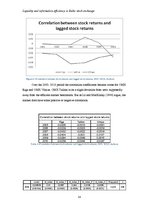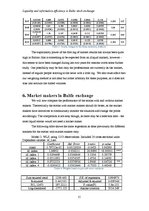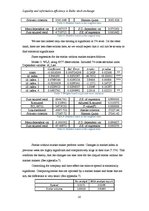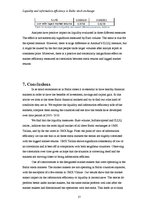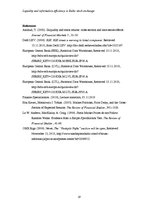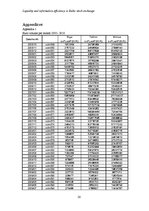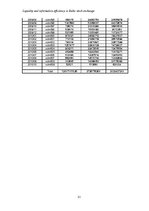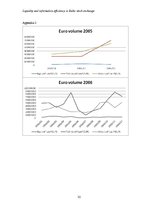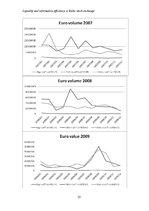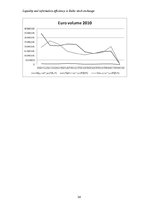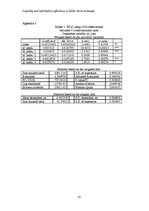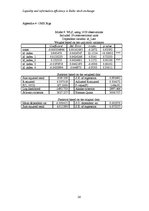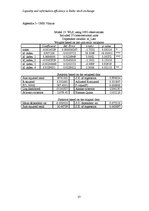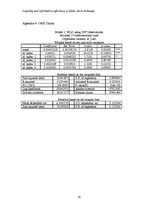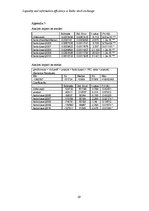-
Liquidity and Information Efficiency in Baltic Stock Exchange
7. Conclusions
In as small economies as in Baltic states it is essential to have healthy financial markets in order to have the benefits of investment, savings and capital gain. In this article we look at the three Baltic financial markets and try to find out what kind of condition they are in. We explore the liquidity and information efficiency side of the markets, compare them among the countries and see how the trends have developed over time period of 2005- 2010.
We find that the liquidity measures- Euro volume, bid/ask spread and ILLIQ ratios-, indicate that the most liquid market of all three Baltic exchanges is OMX Tallinn, and by far the worst is OMX Riga. From the point of view of information efficiency we can see that in all these stock markets the stocks are slightly correlated with the lagged market returns. OMX Tallinn shows significant consistency of low or no correlation and is best off in comparison with both neighbour countries. Observing the correlation over time gives us hope that the situation is correcting itself and the markets are moving closer to being information efficient.
One of controversies is the designated market makers that were operating in the Baltic stock markets. The market makers are not operating in Baltic countries anymore, with the exception of a few stocks in OMX Vilnius. Our results show that the market maker impact on the information efficiency or liquidity is inconclusive. The stocks do perform better under market makers, but the same stocks perform well also after the market makers had discontinued the operations with that stock. This leads us to think that either the market makers really had a significant impact on the stock performance or that the well performing stocks attracted market makers that operated with them for a period of time.
…
The financial markets in all three Baltic countries are new and not well researched. The aim of this paper is to explore the liquidity and information efficiency tendencies among all three countries and to compare them. A supposedly important part of new stock markets are the market makers, which were present in Baltic financial markets, but at this point they are only operating in separate stocks in Lithuania. We will explore what impact did the designated market makers have on all the three exchanges’ liquidity and information efficiencies.

